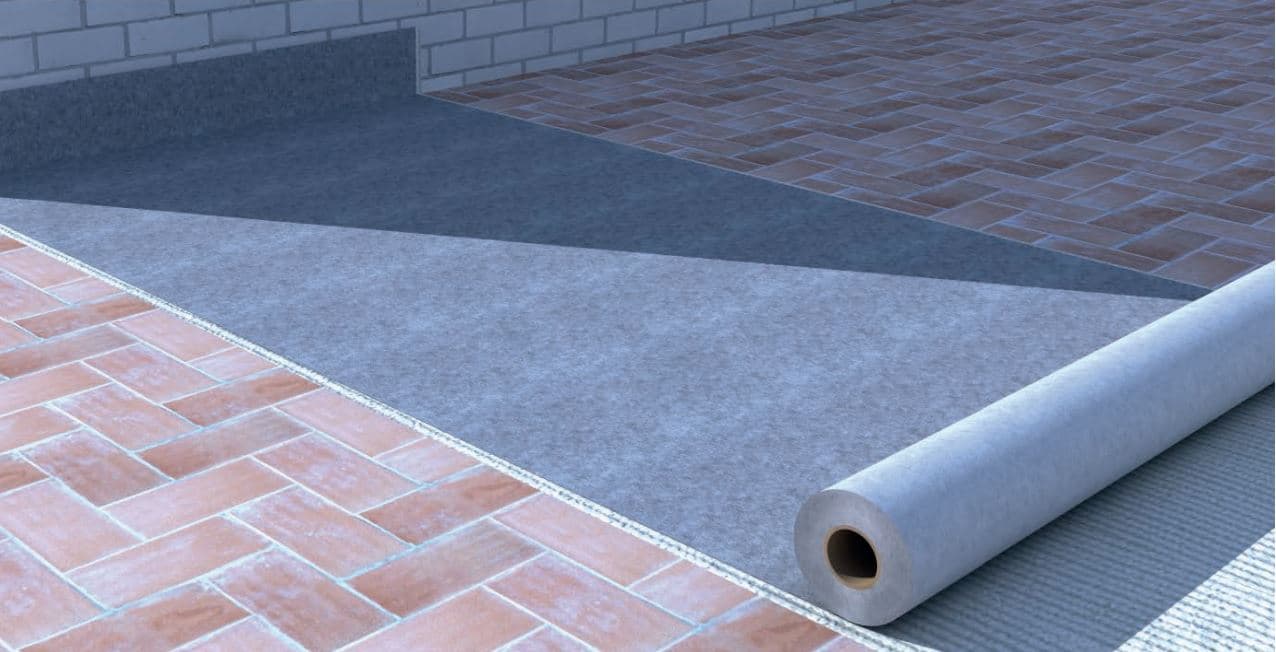Waterproofing Membranes: Benefits and Step-by-Step Installation Guide

A proper waterproofing system is essential in any space to prevent moisture and leaks that can cause significant headaches in the future. An effective and simple solution is the ECODRY 120 waterproofing membrane. In this guide, we will show you step by step how to install them.
But before that, before showing you a detailed installation guide, let’s start by highlighting some of the advantages of using these waterproofing membranes.
Advantages of ECODRY 120 Waterproofing Membranes
The ECODRY 120 membranes are an optimal waterproofing solution. In renovation projects, these membranes stand out for their innovative approach that eliminates the need for debris removal before paving.
With a flexible and elastic design, they ensure a quick and efficient installation, addressing critical points without requiring waiting times and without the complications of traditional systems. Here are the advantages of these waterproofing membranes:
- No need for debris removal. They are installed directly onto the substrate using a C2 S1/S2 cementitious adhesive.
- Flexible tile adhesive application. Use flexible C2 S1/S2 tile adhesive for a long-lasting and durable bond.
- Quick installation without waiting times. They can be installed immediately, without delays.
- No added height to the structure. Unlike traditional systems, these membranes are installed with minimal thickness, eliminating the need for compression layers.
- Cost-effective. Extremely fast installation reduces labor costs, eliminates the need for debris removal and compression layers in renovations, requires no maintenance during its lifespan, and prevents costly future leak repairs.
- Critical point resolution. Thanks to the system accessories and drainage products designed and manufactured by Revestech, they guarantee total waterproofing in the most critical points, where additional reinforcement is needed or where drainage requires a perfect seal.
- Safer than other systems. Prevents the formation of cracks and fissures, protects against moisture, and reduces the risk of mold, bacteria, and weed growth.
- Flexibility and elasticity. The ECODRY 120 waterproofing membranes are incredibly flexible and elastic, allowing them to adapt to various surfaces.
- Compatible with microcement finishes. In addition to being suitable for any protected surface, they are ideal for trendy microcement floors.
- Sustainable. They are the result of transforming and treating raw materials from the circular economy, making them eco-friendly, with a long lifespan and 100% recyclable.
Step-by-Step Installation of Waterproofing Membranes
In this installation guide for ECODRY 120 waterproofing membranes, you will learn the step-by-step process to ensure a durable and reliable waterproofing solution, from cleaning the surface to the final skirting installation.
Complete Installation Guide: ECODRY 120 Waterproofing Membranes
- Check substrate stability and clean the surface. Make sure the substrate is stable and clean the surface properly.
- Marking and measuring. Accurately mark and measure the required dimensions.
- Mark and cut the membrane. Mark and cut the membrane according to the required dimensions.
- Prepare the adhesive. Prepare the C2 S1/S2 cementitious adhesive, ensuring it is well hydrated.
- Apply the waterproofing membrane. Place the membrane, applying the adhesive correctly. Make sure to press firmly and remove air bubbles.
- Continuous installation. Install the ECODRY120 membranes without overlapping, using the same process.
- Sealing and finishing. Make seals and finishes as specified, using SEALPLUS adhesive.
- Surface finishing. Apply C2 S1/S2 cementitious adhesive directly over the membrane to install the pavement.
- Skirting installation. Complete the process by installing the skirting.
More Information About ECODRY 120 Membranes
The performance of ECODRY 120 membranes is exceptional for waterproofing and decoupling in outdoor spaces. These eco-responsible multi-layer membranes have been designed with innovation and sustainability in mind, providing an advanced solution for terraces, rooftops, balconies, or patios, both trafficable and non-trafficable.



